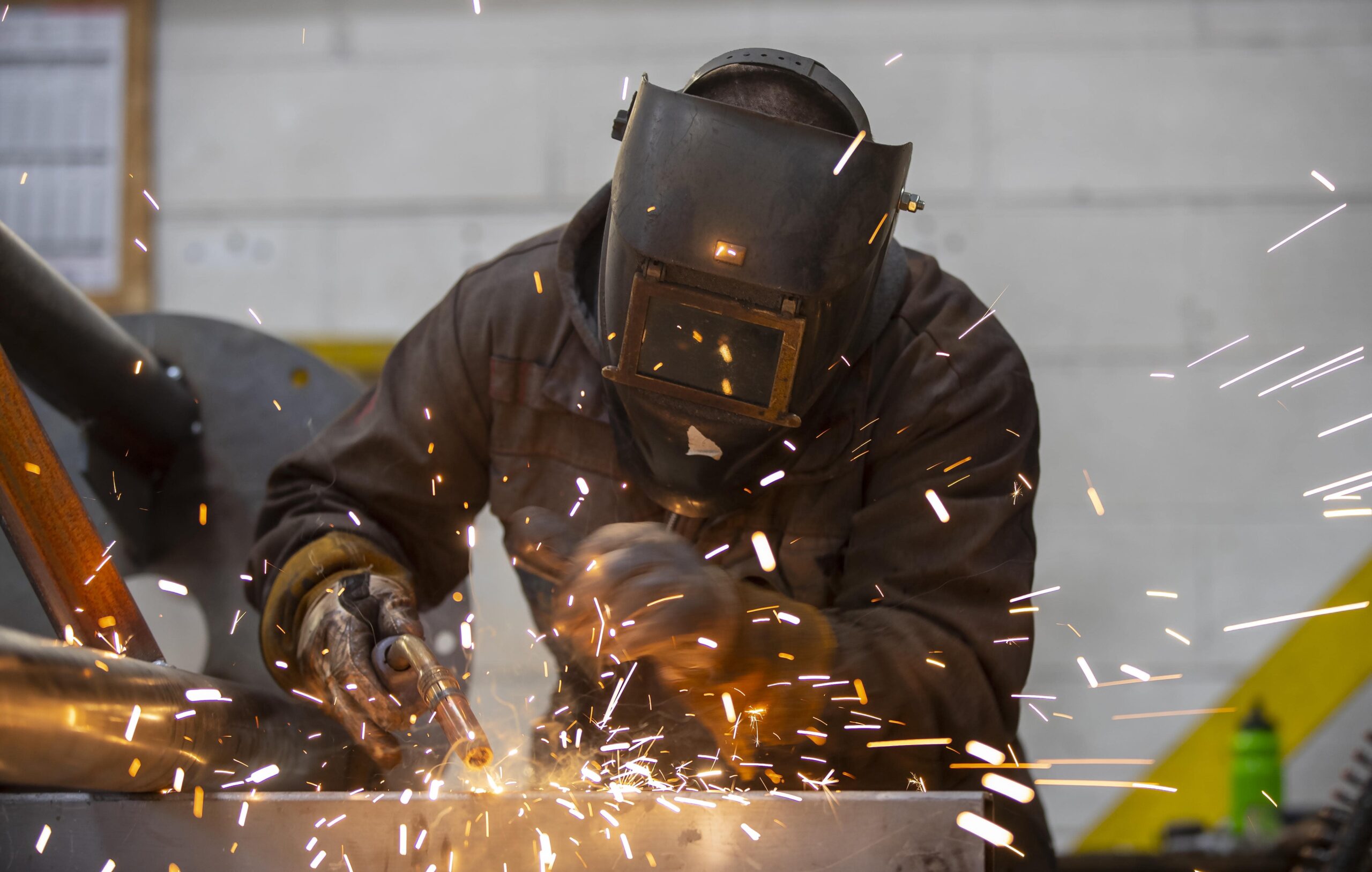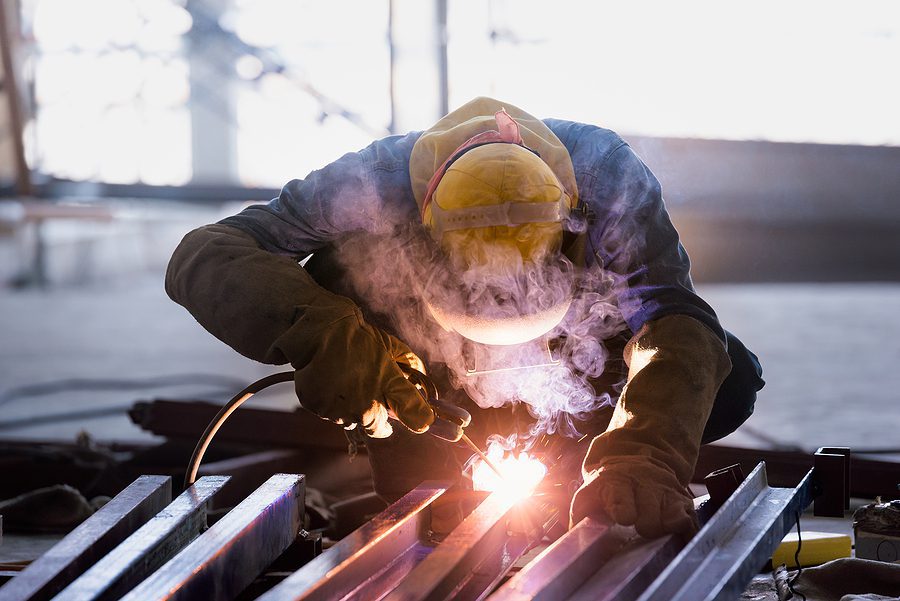Typical Welding Repair Issues and Exactly How to Address Them Efficiently
Welding repair work typically encounter a series of problems that can endanger the honesty of the last item. Common issues include poor penetration, porosity, and misalignment, to name a few. Each defect offers unique difficulties that require specific strategies for resolution. Comprehending these problems is essential for welders intending to enhance their skills and results. This discussion will certainly discover these typical welding repair service issues and effective techniques to resolve them.
Poor Penetration
Insufficient infiltration occurs when the weld metal fails to completely fuse with the base product, causing weak joints and possible architectural failings. This problem often comes from not enough warm input, incorrect electrode angle, or improper welding speed. Welders may come across poor penetration due to a mistake of the necessary specifications for a certain material density or type. Furthermore, contamination on the base material's surface can prevent efficient bonding, exacerbating the trouble. To resolve poor penetration, welders need to guarantee ideal settings on their equipment and keep a clean work surface area. Normal assessment of welds is advised to determine any shortages early, permitting prompt modifications and the prevention of compromised structural stability in welded settings up.
Porosity
Porosity is an usual problem in welded joints that materializes as little gas bubbles entraped within the weld metal. This problem can endanger the integrity of the weld, resulting in decreased toughness and possible failure under stress. Belgrade Fabrication. Porosity generally develops from contamination, dampness, or inappropriate welding strategies, which allow gases to get away into the molten weld swimming pool. To resolve porosity, welders should guarantee correct surface prep work, keep a tidy working setting, and utilize suitable welding criteria. Additionally, choosing the best filler product and securing gas can alleviate gas entrapment. Normal evaluation and screening of welds can aid identify porosity early, ensuring prompt corrective activities are taken, consequently maintaining the high quality and dependability of the bonded structure
Misalignment
Imbalance in welding can develop from numerous aspects, consisting of incorrect configuration and thermal development. Understanding the origin is necessary for efficient resolution. Numerous adjustment techniques are offered to realign parts and ensure architectural stability.
Sources of Misalignment
Welding imbalance usually stems from a variety of underlying concerns that can jeopardize structural integrity. One primary reason is improper fit-up of elements prior to welding, which can result in spaces and irregular surfaces. Variants in thermal expansion during the welding procedure can additionally lead to distortion, particularly if the products being signed up with have various coefficients of development. Furthermore, poor securing and fixturing may fail to hold elements securely in location, causing motion throughout welding. Inadequately conserved devices, consisting of welding equipments and tools, might present variances in the weld bead, further adding to imbalance. Finally, driver error, originating from inadequate training or experience, can likewise play a significant duty in producing misaligned welds.
Correction Strategies Readily Available
Addressing misalignment efficiently requires a combination of restorative techniques customized to the certain problems handy. One common approach is making use of fixtures or jigs to hold parts in the appropriate position during welding, guaranteeing consistent placement. In addition, preheating the products can aid reduce distortion and improve fit-up. For significant misalignment, mechanical realignment techniques, such as using hydraulic jacks or clamps, can be used to fix the position before welding. Post-weld heat treatment might likewise be necessary to eliminate anxieties brought on by misalignment. Careful assessment and adjustment throughout the configuration phase can protect against misalignment issues from coming to be considerable issues, advertising a smoother welding process and enhancing total structural integrity.
Distortion
Distortion is an usual challenge in welding that can occur from different elements, consisting of uneven cooling and heating. Comprehending the root causes of distortion is essential for executing effective avoidance techniques. Addressing this issue not only boosts architectural honesty however likewise improves the total high quality of the weld.
Root causes of Distortion
When based on the extreme heat of welding, materials commonly undergo adjustments that can cause distortion. This sensation mostly emerges from thermal development and tightening during the welding process. As the weld area warms up, the product expands; upon air conditioning, it gets, which can develop interior anxieties. In enhancement, uneven heating throughout a workpiece can exacerbate these stress and anxieties, leading to warping or flexing. The kind of product also plays a considerable function; steels with differing thermal conductivity and coefficients of expansion may respond differently, causing unpredictable distortions. Moreover, inadequate joint design and inadequate fixturing can add to imbalance throughout welding, raising the chance of distortion. Comprehending these reasons is essential for efficient welding fixing and prevention methods.
Prevention Techniques
Effective prevention strategies for distortion throughout welding concentrate on controlling warmth input and making sure appropriate joint layout. Keeping a consistent warmth input assists to decrease thermal development and contraction, which can cause distortion. Utilizing techniques such as pre-heating the workpiece can likewise decrease the temperature level gradient, advertising consistent website home heating. Additionally, picking suitable joint styles, such as T-joints or lap joints, can enhance stability and minimize stress and anxiety concentrations. Carrying out proper fixturing to protect the workpieces in place additionally help in keeping placement throughout the welding process. Ultimately, staggered welding sequences can distribute warmth much more equally, protecting against localized distortion. By applying these approaches, welders can substantially decrease the probability of distortion and improve the overall top quality of their welds.
Fracturing
Fracturing is a common concern run into in welding repair work, frequently arising from various variables such as inappropriate cooling prices, material choice, or insufficient joint preparation. The incident of cracks can significantly compromise the honesty of the weld, causing prospective failures throughout procedure. To resolve this concern, welders must first analyze the origin, guaranteeing that materials work and suitably chosen for the details application. Additionally, regulating the cooling price throughout the welding procedure is vital; quick air conditioning can generate stress and bring about splitting. Proper joint style and preparation likewise contribute to reducing the risk. Applying these approaches can enhance weld quality and longevity, inevitably decreasing the chance of splitting in finished weldments.

Incomplete Blend
A significant issue in welding fixings is insufficient blend, which takes place when the weld metal does not effectively bond with the base product or previous weld passes - Montana Mobile Welding and Repair Belgrade Fabrication. This problem can cause weaknesses in the joint, potentially compromising the stability of the bonded framework. Elements adding to incomplete fusion consist of insufficient heat input, incorrect welding method, and contamination of the surface areas being signed up with. To resolve this issue effectively, welders need to guarantee appropriate pre-weld cleansing and surface area preparation, along with readjust their welding parameters to achieve adequate penetration and fusion. Regular examination throughout the welding process can also help identify insufficient fusion early, permitting prompt restorative measures to enhance the overall top quality of the weld
Overheating
While welding repairs can boost architectural integrity, overheating presents a considerable difficulty that can bring about product degradation. Extreme warmth during welding can change the mechanical residential properties of steels, resulting in lowered strength, enhanced brittleness, and bending. This sensation is especially critical in high-stress applications where structural integrity is extremely important. Recognizing overheating can involve aesthetic assessments for staining or distortion, as well as monitoring temperature level throughout the welding procedure. To reduce the dangers connected with getting too hot, welders need to use suitable techniques, such as controlling heat input, changing travel rate, and making use of ideal filler materials. Additionally, applying pre- and post-weld warm therapies can assist recover material properties and boost the general quality of the repair, guaranteeing long-term efficiency and safety and security.
Frequently Asked Questions
What Are the Usual Indicators of a Welding Issue?

How Can I Check My Welds for High quality?
To examine welds for top quality, one can make use of aesthetic evaluations, ultrasonic testing, and radiographic methods. Each technique ensures architectural stability, recognizes defects, and verifies adherence to defined criteria, eventually enhancing the dependability of the welded joints.
What Security Precautions Should I Take While Welding?
When welding, one must prioritize security by using proper individual safety tools, making certain appropriate ventilation, protecting flammable products away, keeping a clean workspace, and understanding surroundings to avoid injuries and crashes.
Can I Repair a Weld Without Remodeling the Entire Joint?
Repairing a weld without renovating the entire joint is feasible, relying on the damage (Belgrade Welding). Methods such as grinding, including filler material, or utilizing a welding process can effectively resolve specific flaws while protecting the bordering structure
What Devices Are Essential for Reliable Welding Fixes?
Necessary tools for reliable welding repairs consist of a welding machine, cord brush, grinder, protective gear, clamps, and filler materials. Each tool plays an essential duty in ensuring top quality and safety and security throughout the repair process. Porosity typically occurs from contamination, dampness, or inappropriate welding methods, which enable gases to get away right into the molten weld pool. Inadequately kept devices, including welding makers and devices, might present inconsistencies in the weld bead, more adding to misalignment. When subjected to the intense warmth of welding, materials often undergo modifications that can lead to distortion. Fracturing is a common concern run into in welding fixings, typically resulting from various factors such as inappropriate air conditioning rates, product choice, or insufficient joint prep work. A considerable issue in welding repair work is incomplete blend, which takes place when the weld metal does not properly bond with the base product or previous weld passes.